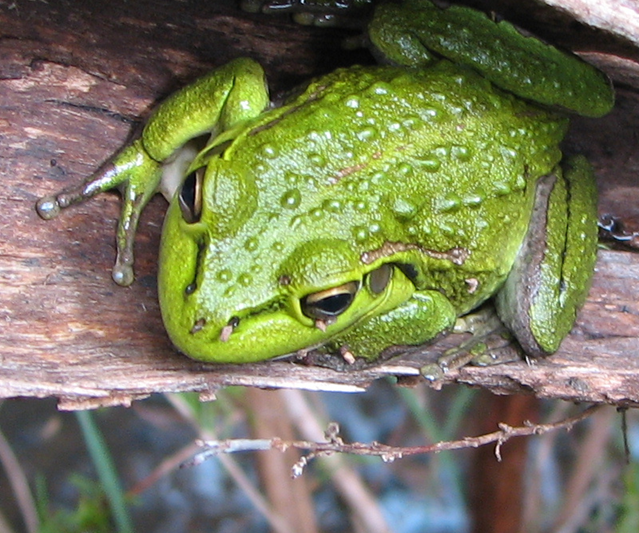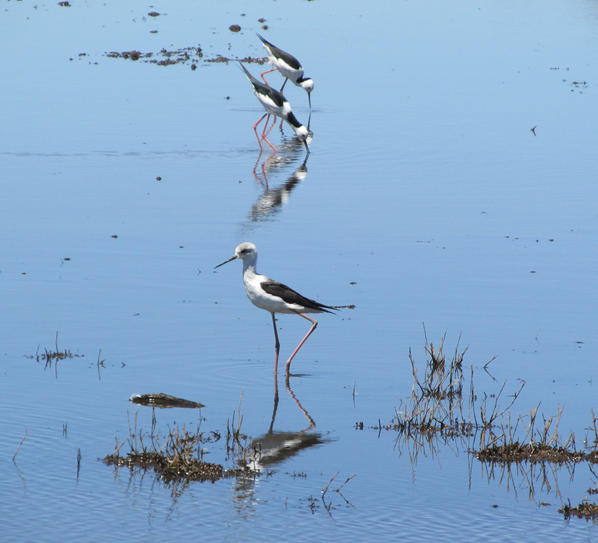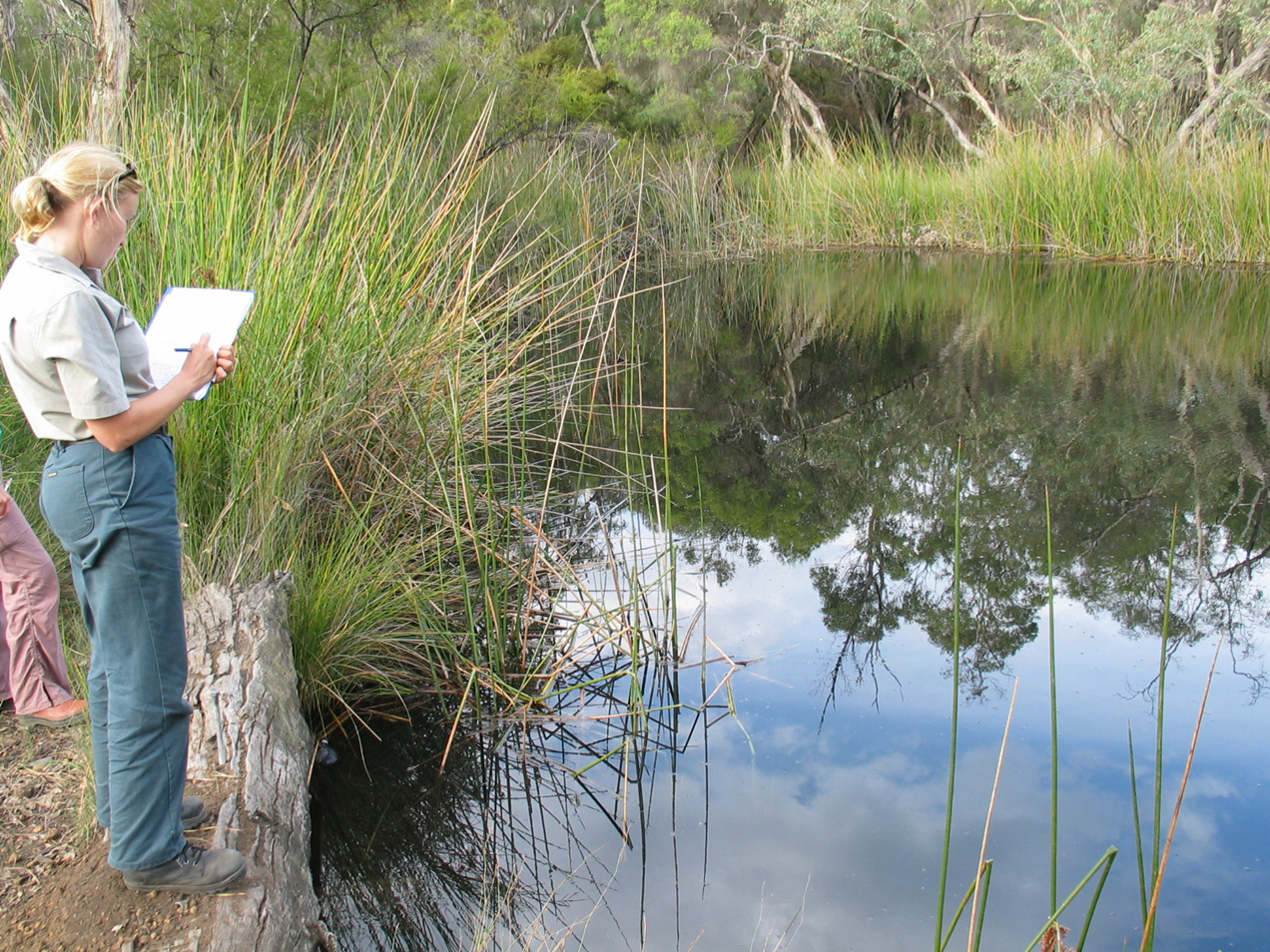Farm Dams Project
Farm Dams as refuges for freshwater plants and animals in a drying climate - a research and Citizen Science project
Background
Project Status
The Project Findings in Detail
Contact Details



Background
Southwestern Australia contains freshwater species found nowhere else in the world, but the climate is drying. Streams and wetlands that used to contain water all year round now dry out in summer-autumn and there are fewer and fewer permanent waterbodies. In summer-autumn, farm dams provide the majority of freshwater habitat present in the Perth Hills landscape. As a result, farm dams may provide an important refuge from drying for freshwater species.
This project aims to:
- Determine which species of aquatic plants, invertebrates, frogs and waterbirds use farm dams; and
- Identify characteristics of farm dams associated with a high number of native species.
Researchers from Murdoch University will be visiting farm dams to identify plants, invertebrates and tadpoles. Landholders and other volunteers will be citizen scientists, recording data on waterbird and frog usage of dams.
The project is a collaboration between the Eastern Metropolitan Regional Council (EMRC) and Murdoch University and is jointly funded by Lotterywest, the EMRC and Murdoch University.
Project Status
Stage 1 of the Farm Dam project has been completed, 40 private landholder dams and dams in local government reserves across the Shire of Mundaring and the City of Swan were surveyed for frog and bird data with the assistance of citizen scientists. This valuable contribution by the community acting as citizen scientists complemented the aquatic plant, macro-invertebrate and tadpole data collected by Murdoch University
The EMRC and Murdoch University, engaged with Birdlife Australia to develop a waterbird guide for the region, which is now available as a tool for other community activities and projects.
Two training workshops were delivered at the start of the project to train volunteers (including landholders) to collect data on waterbird and frog use of farm dams (using the BirdData and FrogID phone apps) as well as individual training sessions for those participants unable to attend the workshops.
Volunteers collected data on waterbird and frog use of farm dams in spring 2018 and autumn 2019.
Murdoch University Researchers (Dr Robson, Dr Chester) collected data on aquatic plant, invertebrate and tadpole biodiversity in >50 farm dams and >50 natural waterbodies in spring 2018 and autumn 2019. They also collected basic water quality and habitat description data for these sites, while liaising with landholders; benefiting both landholders and researchers.
Dr Robson and Dr Chester identified invertebrates and processed water quality samples in the laboratory, then carried out statistical analyses of biodiversity. They downloaded and analysed the waterbird and frog call data.
The project end was marked with an information session "The results are in" on 30 August 2019 with Murdoch University presenting study results to participants, including landholders, volunteers, and environmental officers from local government, Department of Biodiversity Conservation and Attractions.
The event included "where to from here" as Murdoch University presented the options for trialling new tools for increasing dam biodiversity.
2019 - Farm Dams Project - Final Presentation
The project findings in detail
This project has been highly successful, delivering on all the project aims, as follows:
Project aim 1: to determine what native freshwater biodiversity is supported by farm dams.
- Murdoch University researchers recorded 257 species of invertebrates with individual dams supporting up to a maximum of 44 species and 15 species of native aquatic plants in farm dams. Murdoch University researchers and volunteers recorded 12 of 15 frog (& tadpole) species found in the region, 23 of 51 waterbird species in the region. Over the same period, other sources of freshwater habitat disappeared with summer drying.
- Data analysis by Murdoch University researchers showed that each dam supports native biodiversity; but, no one dam will support all species, and many dams spread across the landscape are needed to do this. Habitat in individual dams could be improved to support a greater proportion of native species. This would provide greater indemnity against losses from climate change.
- Community participants have contributed data to the Australian Museum national frog call record database, from areas not previously recorded.
- The Waterbird Guide for the Perth Hills, developed for use in this project, is now available for community use into the future.
Outcome – farm dams do support substantial native freshwater biodiversity. After summer, when most natural waterbodies are dry, farm dams form the main habitat available.
Project aim 2: to determine whether paddock and on-channel dams support different components of native freshwater biodiversity and exotic species, because of their different degrees of connectivity.
- An important difference between paddock and on-channel dams was that paddock dams contained a more of invertebrate species than did on-channel dams.
- We observed a significant negative effect of the exotic fish Gambusia on the diversity of native freshwater invertebrates.
- Paddock dams are more likely to be Gambusia-free than on-channel dams which are connected to streams through which this fish can colonise them.
Outcome – Paddock and on-channel dams do differ in their biodiversity capacity. Therefore, different biodiversity management approaches will be appropriate for each type of dam, especially accounting for the movement of feral predators (Gambusia).
Project aim 3: to identify the characteristics of farm dams associated with higher native biodiversity.
- Dams containing groundwater springs support higher biodiversity than other types
- Water quality was good in most dams
- Most dams contained native submerged aquatic plants which increase animal diversity by providing food and shelter from predators.
- Dams without Gambusia had higher diversity of other animals
Outcome – This research identified 3 important components for biodiversity that have potential to be developed into management tools: (1) in dams without aquatic plants, increasing plant cover should increase animal diversity; (2) in dams without woody debris and leaf litter, increasing cover should increase animal and plant diversity; (3) in dams with Gambusia, reducing Gambusia numbers should increase animal diversity.
Project aim 4: to train landholders as citizen scientists and increase the capacity of all landholders with farm dams to manage them to sustain native biodiversity through web-based knowledge dissemination.
- Three project workshops were held to train volunteers and present project results.
- Volunteers successfully collected usable data using the BirdData and FrogID
- In the 3rd workshop, we presented the potential dam management tools (aim 3) that could be trialled in the next project. Landholders and volunteers were very enthusiastic, agreed that these trials were viable, that they would welcome these trials and were prepared to volunteer their dams for further study.
- Both on visits to landholder properties and during the workshops, multiple landholders asked that we continue the biodiversity surveys. They thought that we needed to collect a larger dataset and include the inter-annual variability that they can see occurring in their dams.
- In the 3rd workshop, landholders suggested options for Gambusia control that have not been trialled before, and subsequent discussions with other experts have confirmed that some would be viable. With Lotterywest funding, Murdoch University will be able to trial these methods in farm dams. This is an excellent example of the value of engaging with the community in biodiversity conservation practice. It also shows the level of engagement achieved by the project and the increased community capacity that has resulted from the project.
- Workshop participants were surveyed and reported strong satisfaction and engagement with the project. Importantly, they were excited by the results and the potential to do more with their dams to enhance biodiversity by trialling the new methods. Providing communities with actions that they can take in the face of climate change to make a real positive difference, is important not just for biodiversity but for sustaining optimism for the future in the community.
- As a result of this project’s positive outcomes, new community groups are becoming involved; if further Lotterywest funding could be obtained, the new proposed research project will proceed with an increased number of project participants, with dams across a greater area of land in and around the Perth hills. This means that any management actions that are found successful through the research will, in turn, be able to be extended to more places within WA and elsewhere.
Outcome – Landholders are now aware of the contribution their dams can make to supporting native biodiversity, and they have developed the capacity to collect data for research, as citizen scientists. We now have landholders with >50 farm dams engaged in this project and keen to continue to collect data and make their dams available for trialling new biodiversity management interventions.
Contact Details
|
Enquiries related to:
|
Contact:
|
|
General enquiries
|
Karen Warner, NRM Coordinator, EMRC
karen.warner@emrc.org.au
(08) 9424 2242
|
|
Murdoch University (regarding site visits or other inquiries)
|
Ed Chester
|
|
Frog ID App problems (i.e. with logging in)
|
Adam Woods, Science Communications and Project Coordinator: FrogID | Australian Museum Research Institute
adam.woods@austmus.gov.au
61 2 9320 6242
|